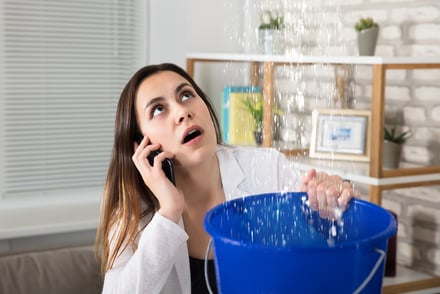 Owners of historic brick homes already know that brick exteriors add character and hold their value. However, brick is not indestructible and requires ongoing care and upkeep. Even if you don’t plan on selling your home any time soon, ignoring small problems with your brick and mortar is a mistake. These minor imperfections can quickly balloon into expensive fixes that leave your home looking neglected and damaging its curb appeal. In contrast, well-maintained brickwork can protect and even increase your home’s market value and routine maintenance is a cost-effective way to keep your home looking great.
Owners of historic brick homes already know that brick exteriors add character and hold their value. However, brick is not indestructible and requires ongoing care and upkeep. Even if you don’t plan on selling your home any time soon, ignoring small problems with your brick and mortar is a mistake. These minor imperfections can quickly balloon into expensive fixes that leave your home looking neglected and damaging its curb appeal. In contrast, well-maintained brickwork can protect and even increase your home’s market value and routine maintenance is a cost-effective way to keep your home looking great.
The Impact of Brick Condition on Home Value
The condition of your historic brick home’s exterior can significantly affect its home value. Well-preserved brick exteriors are a major selling point, offering both aesthetic appeal and the reassurance of owning a well-cared-for home. Buyers are quickly turned off by a home with obvious exterior damage, no matter how beautiful the interior is.
Appraisers and real estate agents are trained to spot signs of trouble in brick homes. Cracks, crumbling mortar, efflorescence or stains can indicate more serious structural issues, such as water infiltration, foundation problems or damage from the freeze-thaw cycle. This indicates that buyers will have to perform future repairs, resulting in lower appraisals and offers.
Don’t Put Off Historic Brick Maintenance
When you defer brick inspection and repair, you run the risk of minor issues developing into larger, more costly problems. Never treat cracks in bricks or mortar as cosmetic. These small imperfections allow water to infiltrate, further weakening the material and quickly expanding the cracks. This cycle is sped up when cold weather arrives and the freeze-thaw cycle of Washington, D.C.’s wintery weather sets in.
Once deterioration begins, your home’s perceived value might decline faster than you think. Additionally, you may experience interior water damage, further hurting your historic brick home’s resale value. A historic brick expert can inspect and assess the exterior for problem areas and develop a repair plan, so your home will continue to look its best for years to come.
The Role of Tuckpointing and Traditional Mortar Mixtures
Tuckpointing is one of the most critical maintenance tasks for a historic brick home. The process involves removing deteriorating mortar and replacing it with a fresh mixture. While this seems simple enough, it is certainly not a DIY project. Historic brick homes were built using lime-based mortar, which is softer and more flexible than today's cement-based mortar mixes. Lime mortar allows the brick to expand and contract with changing temperatures, reducing the risk of cracking. Modern cement-based mortar has too much compressive strength and can cause old bricks to crack or spall over time.
Hiring a historic brick expert is essential to ensure the tuckpointing is done with the correct traditional materials and techniques. These specialized tradespeople understand the importance of mixing and using lime-based mortar which matches the original construction and ensures the long-term durability of your home’s brickwork. Taking the time to complete proper repairs will ensure your brick home always remains an asset, providing both financial and aesthetic rewards as long as you live there - and at that time when you or your heirs decide to sell the property.
Whether you're selling a historic brick home in D.C., or you simply have concerns about the state of your brick and mortar, contact Renaissance Development for a complimentary consultation - we will explain the traditional tuckpointing methods and how our team can help you maintain the structural integrity of your historic property.
Tags:
old brick, historic brick home, historic brick, Historic Brick Home DC, Selling A Historic Home, exterior tuckpointing, traditional tuckpointing methods10/24/24 8:00 AM

